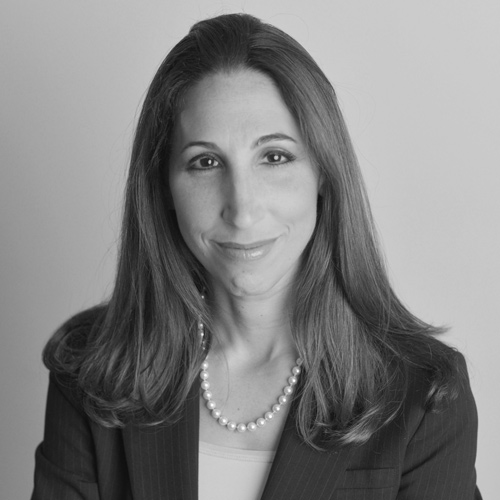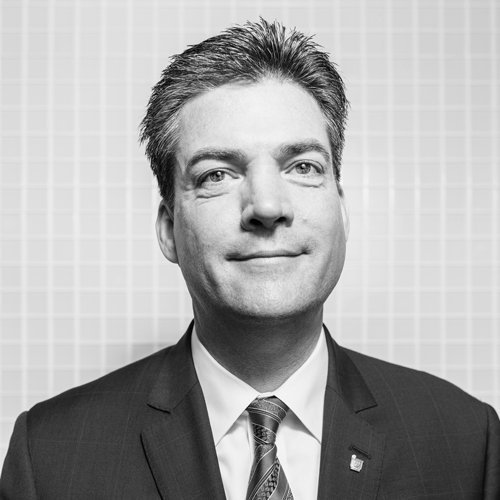Gaunt. That is how Richard Fiore found the legal department when he joined United Airlines in 2005 as senior counsel of litigation and regulatory. For a company with roughly 40,000 employees, approximately 25 attorneys simultaneously balanced nursing a bankrupt organization and handling the numerous demands of protecting one of America’s largest airlines. From a litigation perspective, the department found itself dodging bullets rather than building a stronghold.
While the bankruptcy outlook seemed optimistic, the airline’s reorganization plan had not yet been confirmed. Yet, rather than shrinking back from a challenge many would have found daunting, Fiore felt buoyed. Driven.
Having transitioned from partner at an outside firm to in-house just more than two years after United filed for bankruptcy, Fiore had no time for training. As the lone dedicated commercial litigator, he oversaw a variety of responsibilities varying in subject matter, significance, and scope—handling everything from large commercial matters to antitrust matters. To familiarize himself with the business divisions, he viewed each case as a class. “It’s almost like semesters,” he says. “Half the year is heavily focused on one area, and you learn a lot about that aspect of the company. Though you don’t leave it behind and never look back, when the case is over, it’s kind of like when you take your final exam and move to your next class.”
Fiore’s approach became the backbone for providing pragmatic and actionable advice at the airline. “The way that United’s legal team works best is to advise from a position of understanding the business,” he says. “We combine that with an ability to identify legal issues raised by what the business wants to accomplish.”
The shift from the defensive to offensive began after the merger with Continental Airlines yielded more right-sized staffing. “We went from being gaunt to just lean and efficient,” says Fiore. He worked closely with his manager and then-associate general counsel, Scott Garber, to shape a more proactive cadre. Using Garber’s Continental experience and Fiore’s time at United, the two found a solution that fused their best practices.
“We were very focused on having approachable, accessible litigators and not doomsdayers and naysayers,” he says. They looked for people with good judgment, who understood the need to support the business and propose creative solutions while minimizing risk. With a welcoming of outside viewpoints and personnel, they focused on building a culture organically from within the litigation subgroup. From here, the team brainstormed past experiences and adopted the positives to modify their strategy.
With the team amalgamated, Garber and Fiore leveraged client relationships to participate at the onset of decision-making to identify potential pitfalls. “It was definitely our goal to be very active with the business client at the early stages to prevent litigation,” he says.
Fiore cites United’s dynamic frequent-flier program, MileagePlus, as one effort in which his team has become heavily involved. “It’s a program that changes from time to time to benefit our frequent customers, and before doing so, the MileagePlus team often involves the litigators, so we can discuss the best ways to go about what they need to accomplish,” he says.
After the merger with Continental Airlines was complete, Garber moved on and Fiore moved up into his current role of associate general counsel of litigation and intellectual property. Despite a significant uptick in proactive strategies, Fiore confesses playing catch-up is often still a reality. “There’s no question that there are times that some things come to us after the horse has already left the barn—or when the horse is leaving the barn,” he says. However, his team remains cognizant not to dwell too much on decisions once they are made. Instead, they analyze each initiative in that moment and deliver helpful, appropriate advice based on risk assessment.
“Sometimes the risk is great enough that we will say ‘You can’t do this,’” he says. Because his litigation team gives that advice neither lightly nor frequently, when it must do so, the business client is understanding. “It’s never our first reaction,” Fiore says. “The first reaction is always to consider another way or ensure we understand the business goal and brainstorm whether there’s a way to get there with less risk.” He likens his role to a crossing guard, slowing down momentum until a safer path appears.
Fiore notes certain litigation patterns have emerged. “Since I have managed the team for the last three and a half years, we have definitely seen patterns that almost eerily align with the calendar year,” he says. One year is the year of the patent case. Another year the focus seems to be on consumer class actions. Yet another might bring a spike in personal injury suits.
“As much as it sometimes pains a hotheaded, Chicago Italian to say so, we don’t just fight for the sake of fighting.”
Fiore sees this as a testament to economic changes that might drive more or fewer opportunistic plaintiff cases. “Sometimes it’s driven by one plaintiff lawyer who comes up with a creative theory and files a new type of case, and there are 20 copycats that are frustrated that they didn’t come up with that idea.”
In spite of heavy caseloads, Fiore abhors one-size-fits-all case standardization, a practice he vows will never take place under his watch. He does use processes in approaching similar cases, though. Knowing the key players in the business groups contributes greatly, as they help identify which arguments are available and successful. Again, he cites the frequent-flier cases, which they try to handle as similarly as possible.
Not all cases warrant battle. Fiore’s overarching strategy is to focus on the cases worth fighting. Early analyses allow the litigation team to determine if a case will have farther-reaching impact than one claimant, and if they have the better argument on the law. One cannot predict a win with great certainty. However, Fiore asserts that a quick review of the general law, and one’s positioning to it, can
determine the value of further action.
“As much as it sometimes pains a hotheaded, Chicago Italian to say so, we don’t just fight for the sake of fighting,” he says. When a suit or claim emerges, and Fiore believes United has legitimate exposure or is at fault, the airline resolves the case quickly. This allows him to focus his minimal resources, both personnel and company dollars, more effectively—a necessary approach when something as small as an e-mail taken out of context can put the company in the crosshairs of an opportunistic plaintiff.
“Our clients might not always agree with me, but I think it’s good for clients in all the areas of the business to go through lawsuits because it molds their behavior going forward. They don’t want to sit in that deposition chair again,” he says.
Unforeseen and unpreventable litigation inevitably persists. “That’s the challenge we always have,” Fiore says. “We don’t know what’s coming around the corner. But we can learn from the past and avoid the same sort of patterns that we’ve seen because we know a new pattern will take its place. We respond to the bullets whizzing by our heads, but we will also prevent the same bullets from whizzing again. That’s our goal.”


